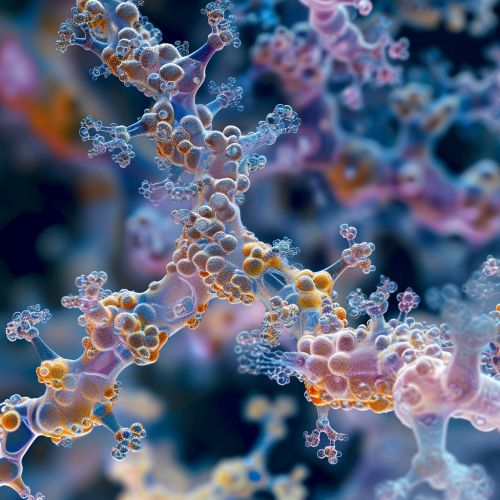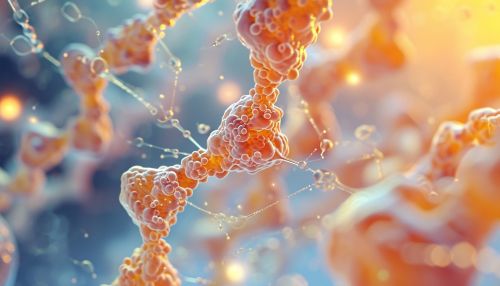Biomolecules
Introduction
Biomolecules are organic molecules, specifically macromolecules, in living organisms that are involved in the maintenance and metabolic processes of life. They include carbohydrates, proteins, lipids, and nucleic acids. These molecules are essential components of all life forms, from the simplest prokaryotes to the most complex eukaryotes.


Carbohydrates
Carbohydrates are a group of biomolecules that are primarily composed of carbon (C), hydrogen (H), and oxygen (O) atoms. They are the most abundant class of biomolecules in nature, serving as a primary source of energy for most organisms. Carbohydrates can be classified into three main types: monosaccharides, disaccharides, and polysaccharides.
Monosaccharides
Monosaccharides are the simplest form of carbohydrates, consisting of a single sugar molecule such as glucose or fructose. They serve as the building blocks for more complex carbohydrates and can be used directly for energy.
Disaccharides
Disaccharides are composed of two monosaccharide molecules bonded together. Examples include sucrose (common table sugar), lactose (found in milk), and maltose (found in malted grains).
Polysaccharides
Polysaccharides are complex carbohydrates that consist of long chains of monosaccharide units. They serve various functions, including energy storage (as in starch and glycogen) and structural roles (as in cellulose and chitin).
Proteins
Proteins are complex biomolecules composed of amino acids, which are organic compounds made of carbon, hydrogen, nitrogen, oxygen, and sometimes sulfur. Proteins perform a vast array of functions within organisms, including catalyzing metabolic reactions, DNA replication, responding to stimuli, and transporting molecules from one location to another.
Amino Acids
Amino acids are the building blocks of proteins. There are 20 different types of amino acids that can be combined to make a protein. The sequence of amino acids determines each protein’s unique 3-dimensional structure and its specific function.
Protein Structure
Proteins have four levels of structure: primary, secondary, tertiary, and quaternary. The primary structure is the sequence of amino acids, while the secondary structure includes alpha-helices and beta-sheets that form within the polypeptide. The tertiary structure is the overall 3-dimensional shape of the protein, and the quaternary structure is the arrangement of multiple protein molecules into a multi-subunit complex.
Lipids
Lipids are a group of naturally occurring molecules that include fats, waxes, sterols, fat-soluble vitamins (such as vitamins A, D, E, and K), monoglycerides, diglycerides, triglycerides, and phospholipids. The main biological functions of lipids include storing energy, signaling, and acting as structural components of cell membranes.
Fats
Fats are a type of lipid that are made up of two kinds of smaller molecules: glycerol and fatty acids. Fats are needed to keep cell membranes functioning properly, to insulate body organs against shock, to keep body temperature stable, and to maintain healthy skin and hair.
Phospholipids
Phospholipids are a class of lipids that are a major component of all cell membranes. They can form lipid bilayers because of their amphiphilic characteristic. The structure of the phospholipid molecule generally consists of two hydrophobic fatty acid "tails" and a hydrophilic "head" consisting of a phosphate group.
Nucleic Acids
Nucleic acids are biomolecules essential to all known forms of life. They are composed of nucleotides, which are monomers made of three components: a 5-carbon sugar, a phosphate group, and a nitrogenous base. The two main types of nucleic acids are deoxyribonucleic acid (DNA) and ribonucleic acid (RNA).
DNA
DNA carries the genetic instructions used in the growth, development, functioning, and reproduction of all known living organisms and many viruses. DNA molecules consist of two strands, made up of a backbone of sugars and phosphate groups joined by ester bonds, and bases attached to the sugars.
RNA
RNA is a polymeric molecule essential in various biological roles in coding, decoding, regulation, and expression of genes. RNA, like DNA, consists of a long chain of nucleotides, but is usually single-stranded. It has a broader range of functions, including involvement in protein synthesis, gene regulation, and the structure of ribosomes.
